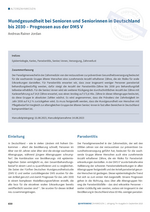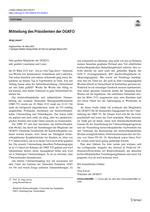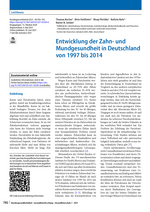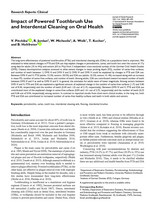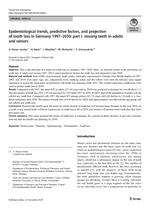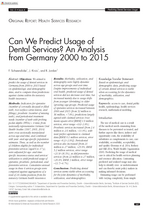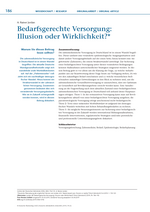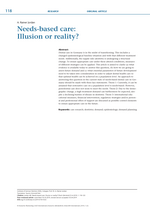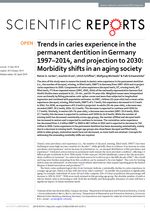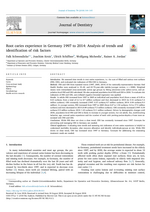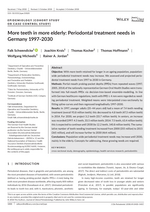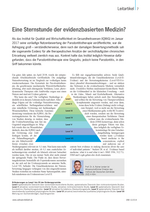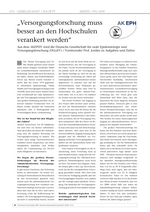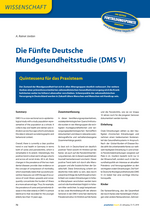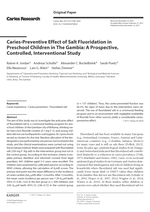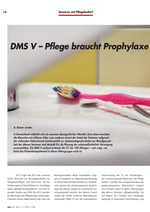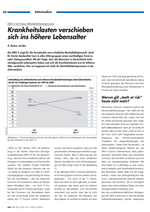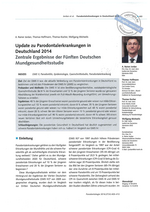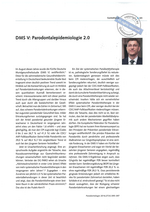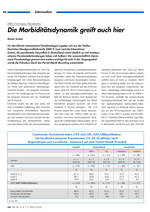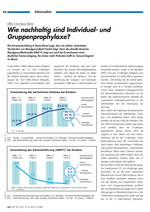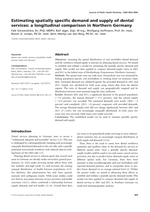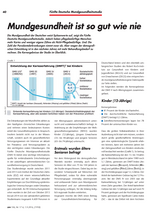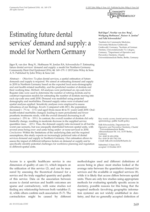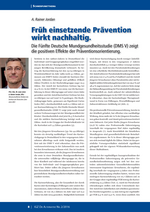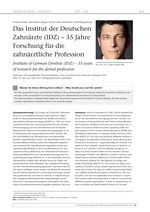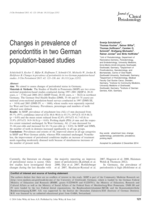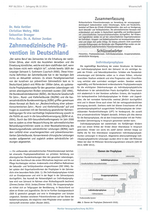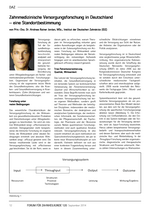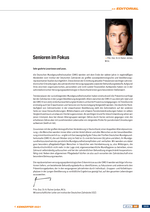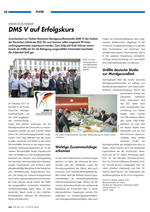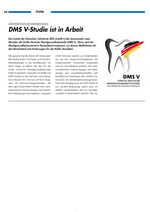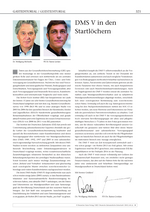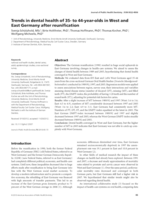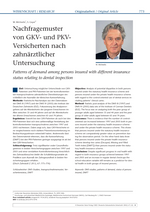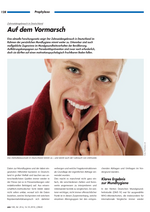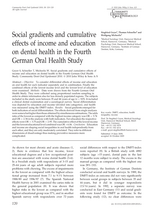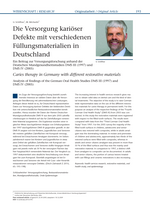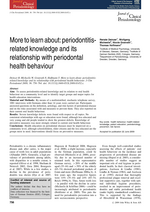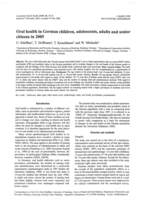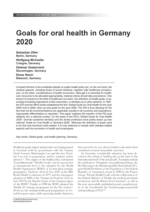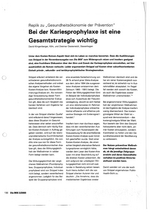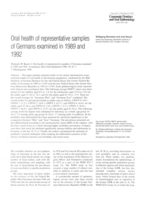
Gesundheitsversorgungsforschung und -epidemiologie
Autoren
Schwendicke, Falk
Nitschke, Ina
Stark, Helmut
Micheelis, Wolfgang
Jordan, A. Rainer
Schlagwörter
Cross-sectional study
Demography
Epidemiology
Prediction model
Tooth loss
Publikation — Zeitschriftenbeiträge
Titel
Epidemiological trends, predictive factors, and projection of tooth loss in Germany 1997–2030:
Untertitel
part II. Edentulism in seniors
Titel kurz
Clin Oral Invest
Titel Ausgeschrieben
Clinical Oral Investigations
ISSN
1436-3771 (Electronic); 1432-6981 (Linking)
Jahr
2020
Ausgabe
24
Issue
11
Seitenzahl
3997-4003
Erscheinungsdatum
02.11.2020
Epidemiological trends, predictive factors, and projection of tooth loss in Germany 1997–2030:
part II. Edentulism in seniors
Objective: This is the second part of a report on tooth loss in Germany 1997–2030. Here, we describe trends in the prevalence of edentulism in seniors 1997–2014, assess predictive factors for edentulism, and projected it into 2030.
Material and methods: We used data from three waves of the cross-sectional, multi-center, nationwide representative German Oral Health Studies. Overall, 3449 seniors (65–74 years) were included (1997: 1367; 2005: 1040; 2016: 1042). Age, sex, educational level, smoking status, and the cohort were entered into age-cohort binary-logistic regression models to assess the association of predictors with edentulism and to project edentulism in 2030 via Monte Carlo simulations.
Results: Between 1997 and 2014, the prevalence of edentulism decreased from 24.8 to 12.4%. With each year of age, the risk of being edentate increased (by 11%, p < 0.001); it was also significantly increased in female versus male (by 40%, p = 0.001), low versus medium and high educational level (up to 257%, p < 0.001), and in former and current smokers (up to 258%, p < 0.001). We predict the prevalence of edentulism to be reduced to 4.2% in 2030. The reduction will be higher in males, never and former smokers, and those with low socio-educational level. On an absolute level and despite a growing elderly population (aged 60–80 years), the number of edentate individuals will have decreased by 3.6 million in 2030 compared with 1997.
Conclusions: Edentulism in seniors has declined equitably in Germany. The decline is expected to continue until 2030. Further efforts are needed to tackle the underlying risk factors.
Clinical relevance: This study presents trends of edentulism in Germany for a period of three decades. It provides clinically relevant data for health care planning by 2030.


